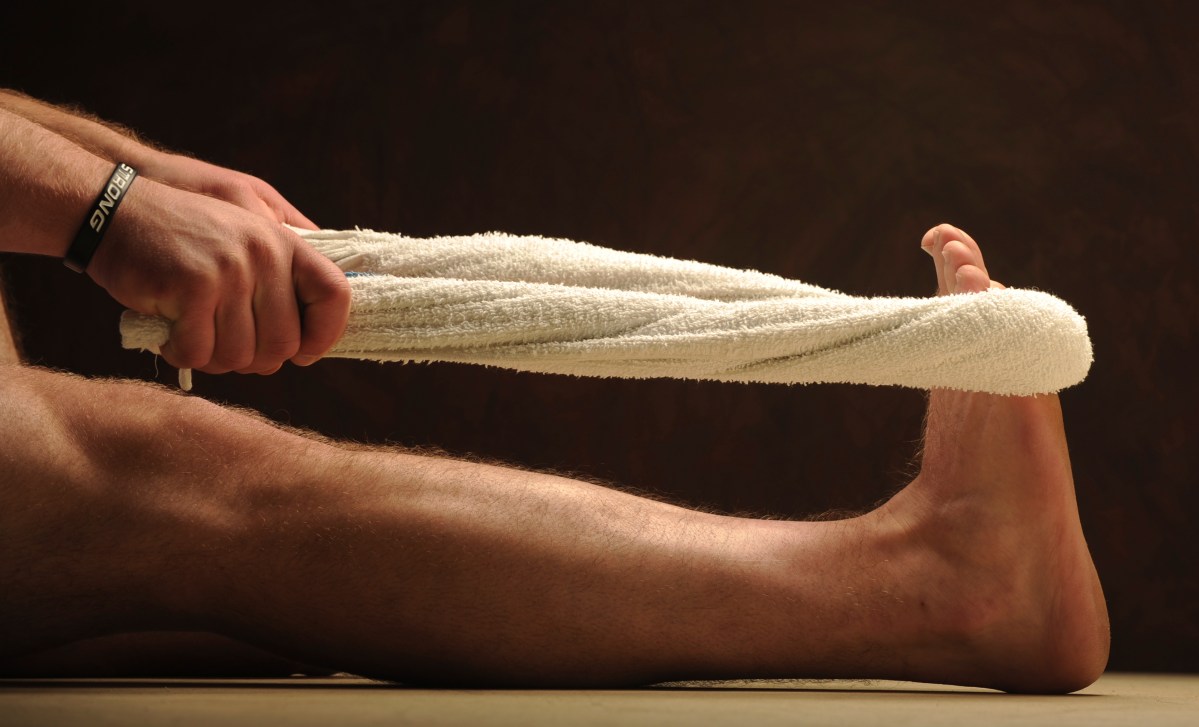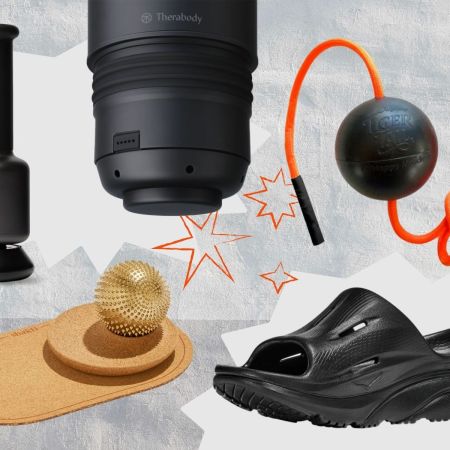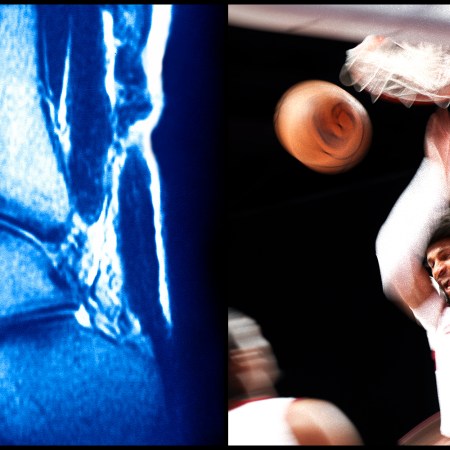In a recent edition of our wellness newsletter, The Charge, we spotlighted a German judoist named Alexander Wieczerzak, who found some creative ways to stay in shape during quarantine.
In this photo, the former gold medalist is performing a dead hang in the makeshift gym in his backyard, but his hands aren’t wrapped around the pull-up bar; he’s clutching his own judogi (the traditional term for a judo uniform). Hanging from steel is difficult enough — clinging to heavyweight cotton is an extra challenge for the muscles in the fingers and forearms.
Grip strength is critical for judoists, obviously, but it’s important for all of us; the physical trait is linked to cardiovascular health, bone mineral density, mobility, overall strength and even cognitive function. Seniors with stronger grips routinely score better on “tests of working memory, processing speed, and verbal ability.”
Wieczerzak’s L-sit hold reminded us that while some of the lockdown’s “emergency” fitness equipment might be better left in the past (like hammer-curling milk jugs), there are household items still worthy of your exercising attention. The standard shower towel, for instance, is pretty similar to Wieczerzak’s kimono. Used with intention and care, it can help you strengthen your shoulders, train your core and stretch out your lower half. Here’s what you need to know.
This Chart Will Simplify Your “Recovery Fitness” Routine
Some strategies help heal the body. Others are a waste of time.How to Use Your Towel(s)
Depending on which exercise you’re using them for, towels enhance muscle engagement, invite full range of motion, stimulate mind-muscle connection and offer a uniquely shifting/unsteady load (similar to other forms of unconventional training).
If you’re recovering from injury, or a bit skittish around free weights, towels also represent a low-stakes and low-impact alternative for strength training. Not to mention: they’re cheap, portable and plain fun to play with compared to the usual suspects on the gym floor. So, how do you begin using one? We’ve outlined three starter moves across three key categories: Upper Body, Core and Recovery.
Upper Body
- Rows: Wrap the towel around a sturdy, immovable object at waist height. Grab each end of the towel with your hands, lean back, and position your feet forward, so your body is at an angle. Pull your chest towards the towel, squeezing your shoulder blades together. It’s basically a DIY TRX system. This will target the back muscles, particularly the rhomboids and lats. (Check out this video for a great explainer.)
- Bicep Curls: You have lots of options here. The most conventional method is to stand on the middle of a long towel, feet shoulder-width apart, and pull both ends towards you, creating resistance with your feet. But you could also hold a smaller dish towel with isometric tension (see here), or loop a towel through a kettlebell (see here) for a move that will seriously test your “crush grip.”
- Chest Flyes: Another great isometric option. Drape a towel around your back and clutch either end with your hands (it should wrap around your triceps). Then simply push forward so the ends will meet in the middle of your chest, simulating the standard cable chest fly. Make sure to go nice and slow.
Core
- Russian Twists: Sit on the floor holding a folded towel with both hands in front of your chest. Lean back slightly, lift your feet off the ground, and twist your torso, moving the towel from side to side. This exercise targets the obliques and overall core stability.
- Squat Holds: Squats pair well with everything under the sun. In order to really get your stabilizers firing, hold a towel out straight from your body, taut, and lean back into a squat. For a bonus, perform an overhead press once you’re in the squatted position. Then return to rest and repeat.
- Slide Combos: Possibly the hardest exercise we’re listing here, so no sweat if you can’t complete it at first. Orient yourself in a plank position, with a folded washcloth under the palm of each hand. (Make sure you’re on a “slippery surface.”) Then push one hand out at a time, until that arm is fully extended, hold, and slowly return to the plank position. This will shred your upper body in addition to your core. See a tutorial here.
Recovery
- Hamstring Stretch: You’re probably familiar with this one. Sit on the ground with your legs extended, loop a towel around the bottom of your feet and hold each end. Gently pull yourself forward, keeping your knees straight. This stretches the hamstrings and lower back.
- Shoulder Stretch: Another classic — hold the towel with both hands behind your back, one hand holding it from above and the other from below. Gently pull the towel up with the upper hand and down with the lower hand, feeling the stretch in your shoulders and triceps.
- Neck Stretch: Sit or stand holding the towel with both hands behind your neck, elbows wide. Gently pull forward with the towel while tilting your head back, stretching the neck muscles. Switch by tilting your head forward and pulling up with the towel for a back neck stretch. Sweet, sweet relief.
The Charge will help you move better, think clearer and stay in the game longer. Subscribe to our wellness newsletter today.



















